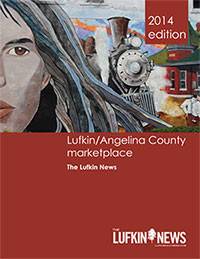Encouraging results -- usually

One newspaper's readers wanted to go back down from three days to two days a week. Another paper's readers wanted to go back up from five days to seven days.
Sometimes, complaints and praise were quite specific. Keep a particular feature. Get a better proofreader.
But SNPA publishers who have embraced readership surveys have often made the happy discoveries that people are still reading their newspapers in print or online. And perhaps most important, they still want local news.
 |
Earlier this year, 15 daily and weekly members of Southern Newspapers Inc. in Texas, Alabama and Georgia, conducted telephone surveys of residents in their respected coverage areas using Pulse Research. Questions were modeled on those used by a similar Boone group survey, Shrader said.
"They also looked at online readership. And when you combine the regular – and they define regular as once or twice a week – readership for The Lufkin News, it's up in the 79, almost 80 percent range with a combination of print, home delivery, single-copy, plus online readership," he said.
"That was something we really hung our hat on, made up a whole ad campaign, sales brochures, etc. Surprisingly, we found that to be the case in most of our markets."
The group's advertising campaigns and house ads are intended to remind readers and advertisers alike that if they want to know what's going on in their hometowns, they need to read the papers, Shrader said.
The group newspapers could choose from two sets of questions, and Shrader said both were inexpensive. The Lufkin survey has already paid for itself and then some, he said.
While publishers obviously would rather have people subscribe to their print edition and/or websites, Lufkin also found that non-subscribers also identify with their community and want information.
"The people that don't subscribe to our newspaper still want to find out what's going on in their hometown," Shrader said. "They'll look at it online, even though we have a paid site. They still will look at it and read the first paragraph of each story and then hopefully decide to buy it."
At The Tidewater News in Franklin, Va., open-ended questions that allowed respondents to offer longer answers yielded unexpected results. Eight years ago, the paper went from two issues a week to three.
It turns out, said Publisher Tony Clark, "People would rather have two meatier issues than three thinner issues." The No. 1 recommendation from readers was to drop back to two issues a week, leaving him to ponder the pros and cons of both schedules.
When the U.S. Postal Service considered cutting out Saturday delivery, a two-day schedule looked likely because about half of The Tidewater News subscribers get their papers by mail and the weekend edition could not have been distributed. For now, however, Clark also must consider whether cutting back again would send the wrong message about the financial health of the paper.
"Given the state of larger publications that are struggling, we just don't want to send the wrong signals," he said.
Readers also responded point blank that the paper needs better proofreading. "Obviously, our readers feel we need to tighten up on that," Clark said. On the other hand, the response shows that people read the paper closely, he said.
Readers also asked for more local and community news, as well as more good-news stories, Clark said.
But not all readers have the same opinion about their particular community's newspaper. John Winters, publisher of the Newnan Times-Herald in Georgia, wrote a story about the results of a 2013 survey. Among other issues, he addressed complaints about paying for an online digital version of the paper and about not having a Monday or Tuesday newspaper.
"On the latter, we thank you that you miss two days of the paper," Winters wrote. "We do, too. The economic realities are those two days simply didn't have enough advertising support, and the cost to produce was more than we could recoup. But nothing is forever."
The Newnan paper learned that readers prized local coverage. The best read sections were the editorial page, local business and features, state news and weekly calendar. What people read "never" or "rarely" were stocks (86 percent), the TV grid (88 percent), comics (74 percent) and senior news (71 percent). And what readers wanted most was more local entertainment coverage.
For Mitchell Lynch, publisher of The Daily Star in Oneonta, N.Y., a big issue was how the editorial philosophy was perceived.
"I'd hear from a lot of people how liberal we were," Lynch said. But the paper's coverage area, which includes two liberal arts colleges, encompasses both liberal residents in the city and conservatives in rural areas, while its ownership group CNHI is considered conservative.
"But we did the survey, and guess what? We're exactly in the middle, where we need to be."
Results were mixed on the issue of whether to continue endorsing candidates. "I think we're going to drop the national aspect and focus more on the local aspect," Lynch said.
But a 15-year-old daily front-page feature, "The Bright Side," is still well-received, Lynch learned. "We wondered if it's still effective, if it makes a difference. And according to the survey, yes it does."
For more information, contact Greg Shrader at gshrader@lufkindailynews.com, John Winters at john@newnan.com, Mitchell Lynch at mlynch@cnhi.com or Tony Clark at tony.clark@tidewaternews.com.
Coming next in this series: Best practices – recommendations for the first survey or the next one.
Read Part 1 from this series: Affordable readership research
Read Part 2 from this series: What do you want to know?
 |
|
Jane Nicholes |
If your newspaper has conducted a recent readership survey, we hope you will share a copy of your questionnaire with us. Email a copy to jbnicholes@att.net or cindy@snpa.org. SNPA's R&D partners also are encouraged to contact Nicholes to share information about the work they are doing with SNPA member newspapers.
Jane Nicholes is a freelance writer and editor based in Daphne, Ala., and a former editorial writer for the Press-Register in Mobile. Email her at jbnicholes@att.net.






